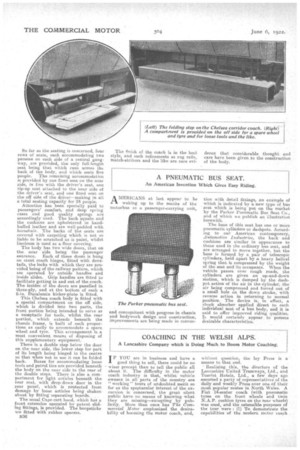A PNEUMATIC BUS SEAT.
Page 20

If you've noticed an error in this article please click here to report it so we can fix it.
An American Invention Which Gives Easy Riding,
A MERICANS at last appear to be waking up to the merits of the motorbus as a passenger-carrying unit,
and concomitant with progress in chassis and bodywork design and construction, improvements are being made in connec
tion with detail fittings, an example of which is indicated by a. new type of bus seat which is being put on the market by the Parker Pneumatic Bus Seat Co., and of which we publish an illustration herewith..
The base of this seat has one or more pneumatic cylinders or dashpote. According to our American contemporary, Automotive Inclustriee, the back and cushions are similar in appearance to those used in the ordinary bus seat, and are arranged to move together, but the base is formed by a pair of telescopic cylinders, held apart by a heavy helical spring that is compressed by the weight of the seat and its occupants. When the vehicle passes over rough roads, the cylinders. are given an up-and-down motion, which is damped by the dashpot action of the air in the cylinder, the air being compressed and forced out of a small hole on the down stroke, with. reverse action in returning to normal position. The device is, in effect, a shock absorber applied direct to each individual seat of a bus body, and it is said to -offer improved riding tjualities. It would certainly appear to possess desirable characteristics.






























